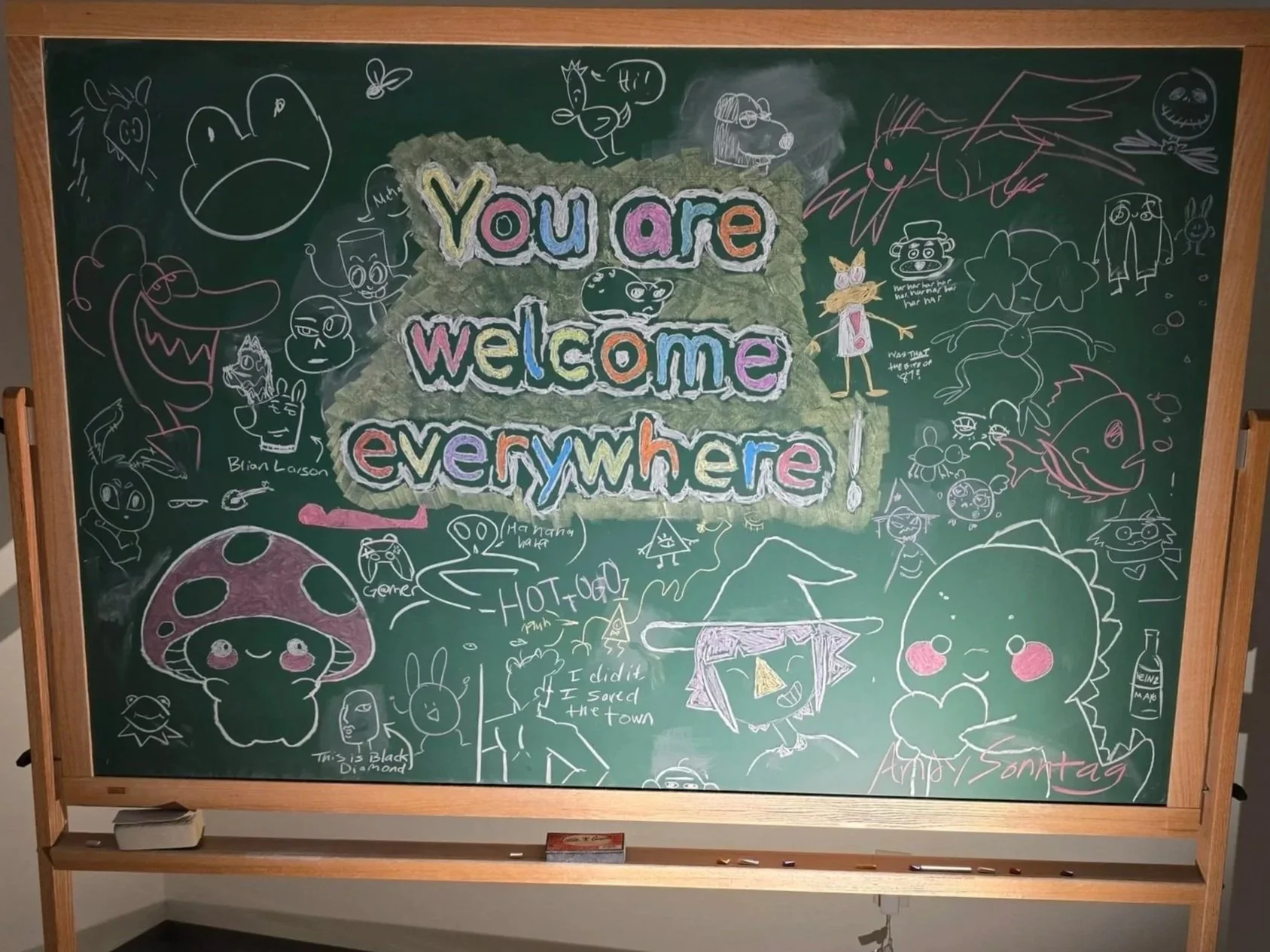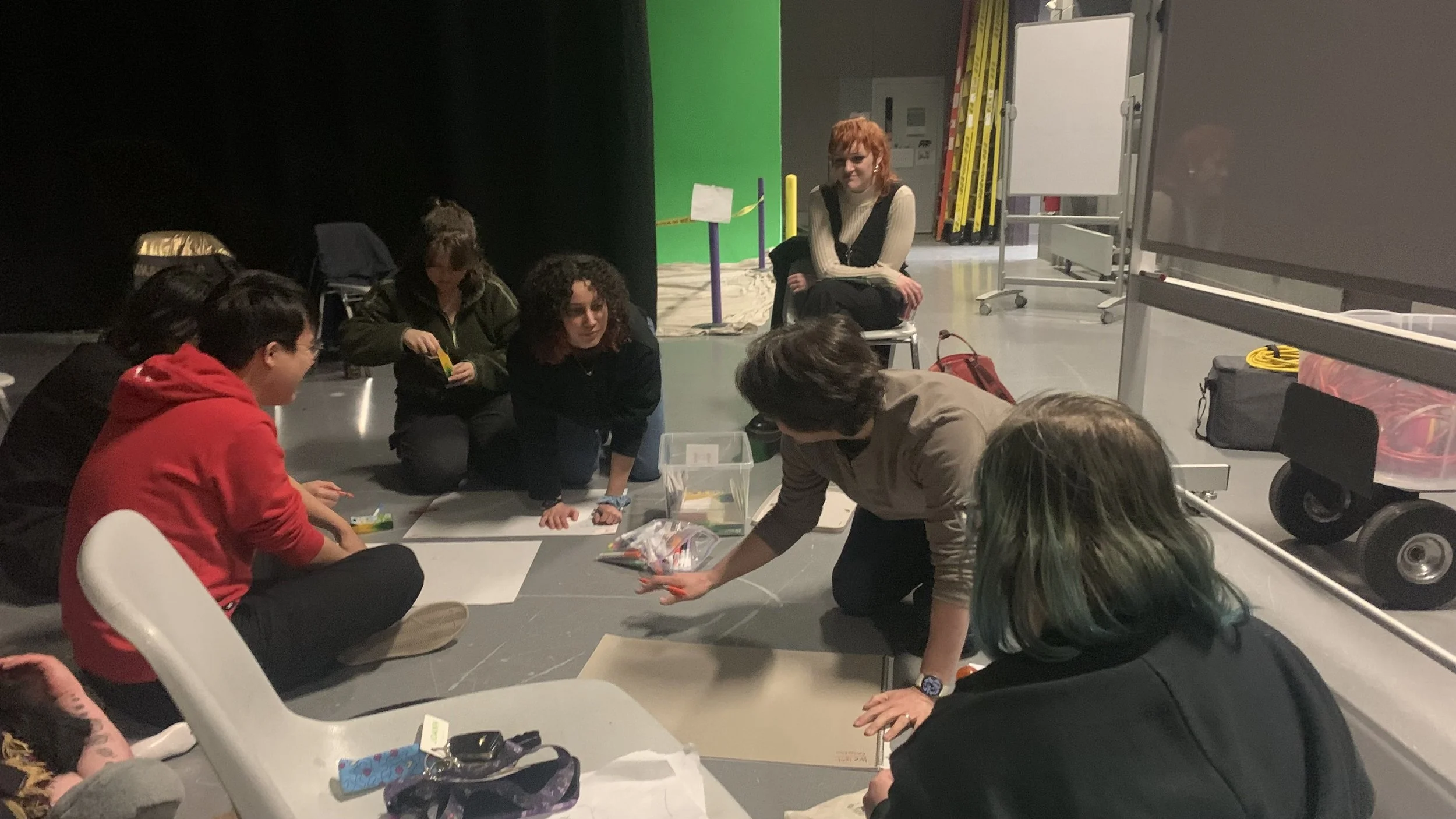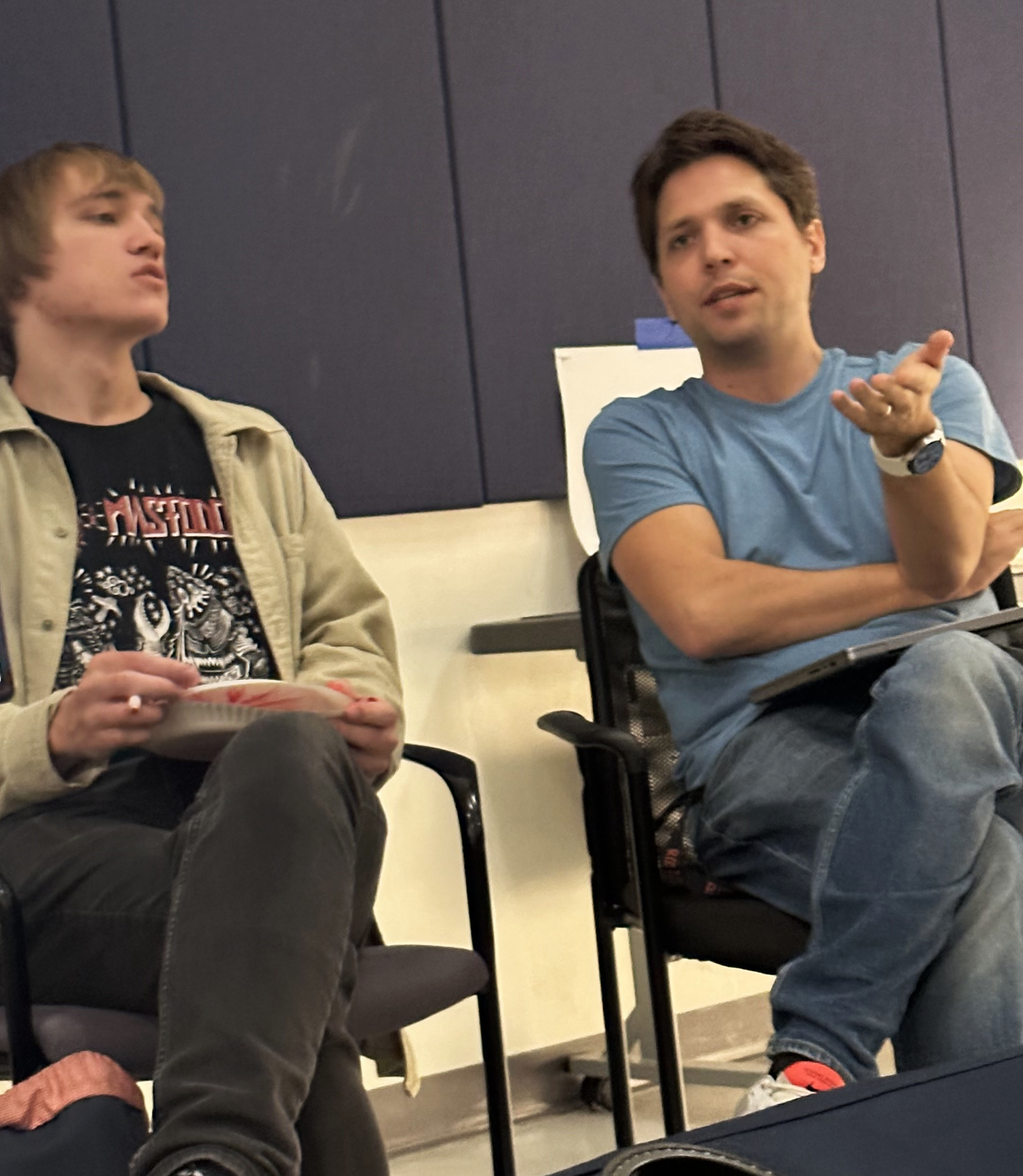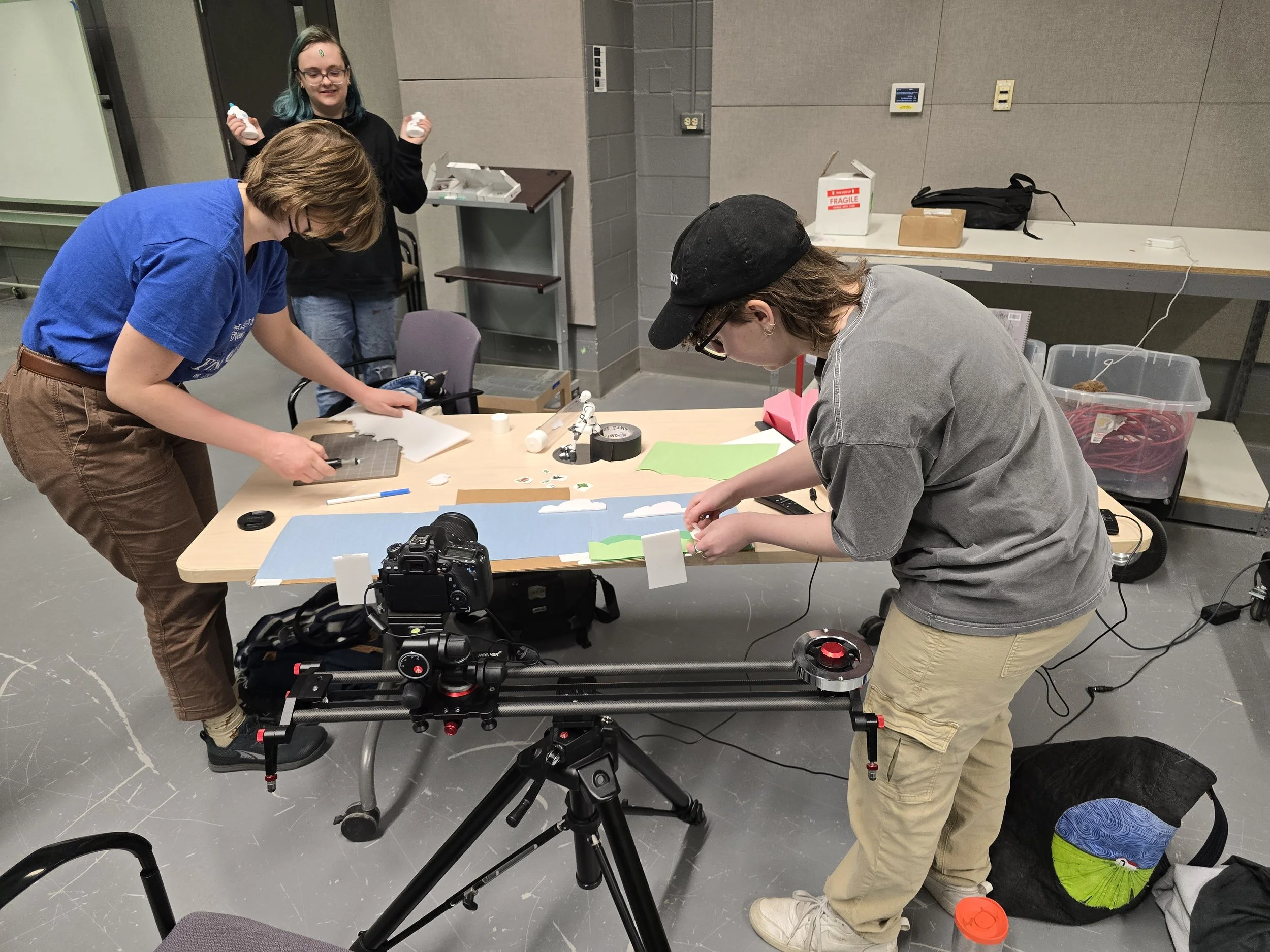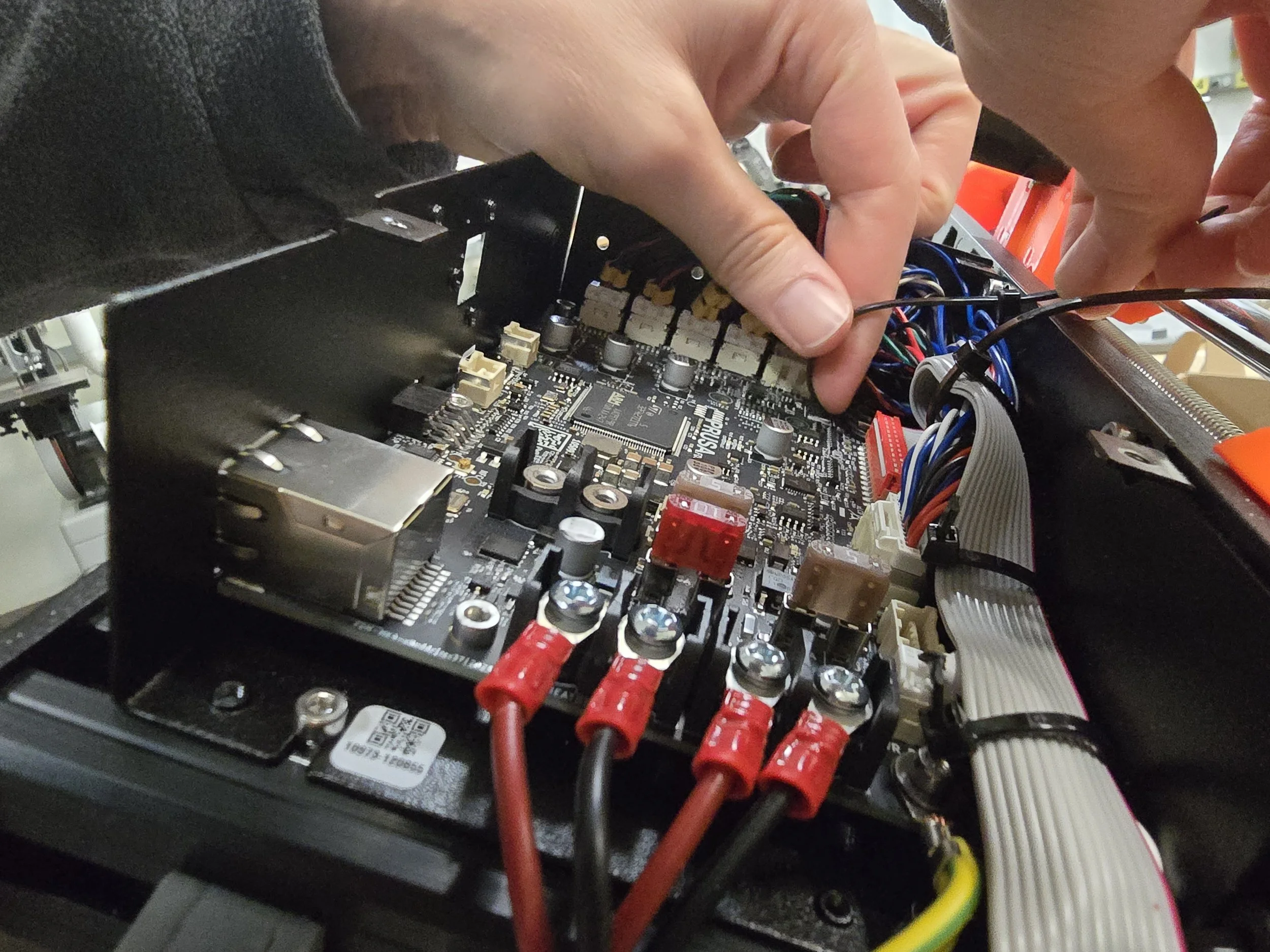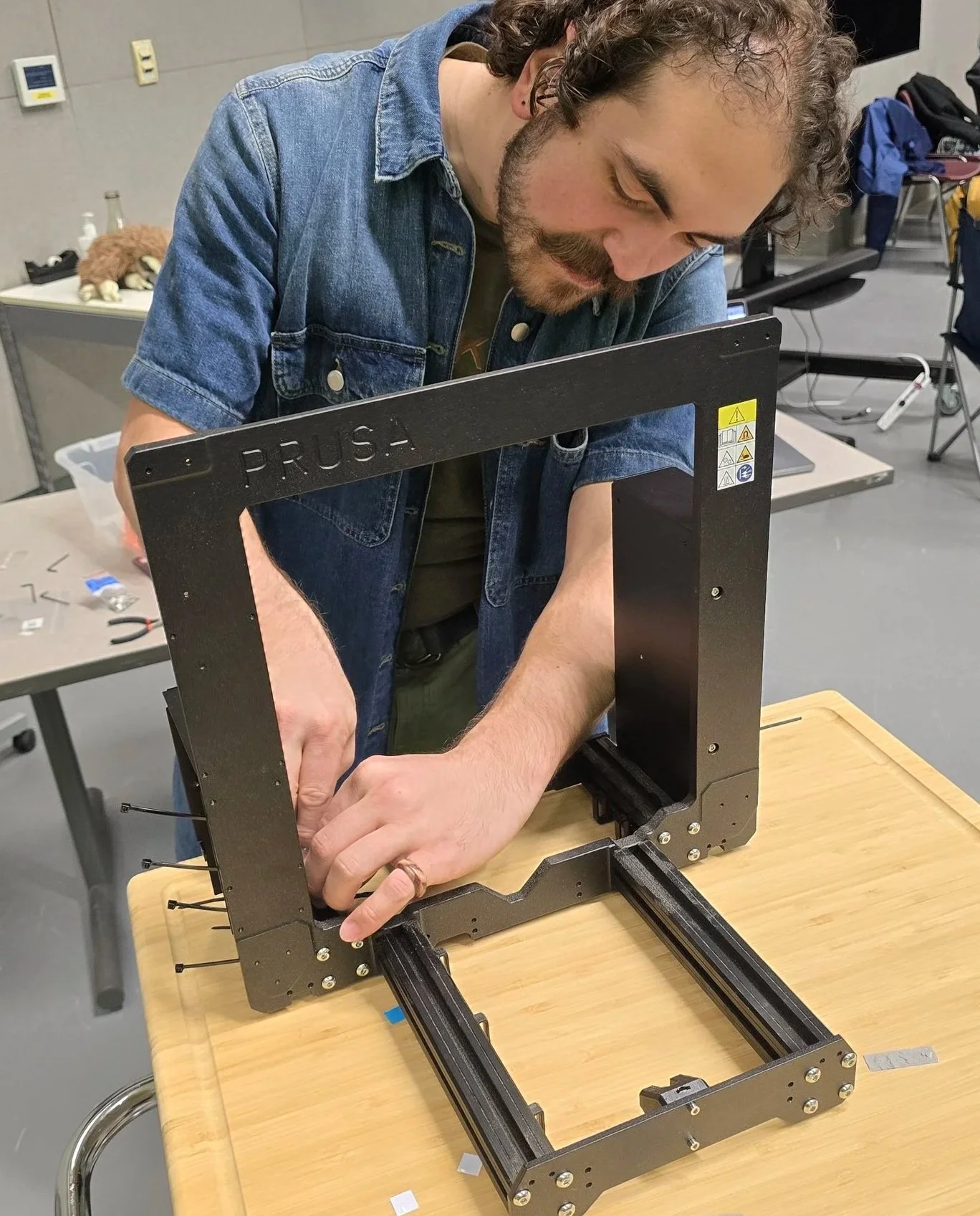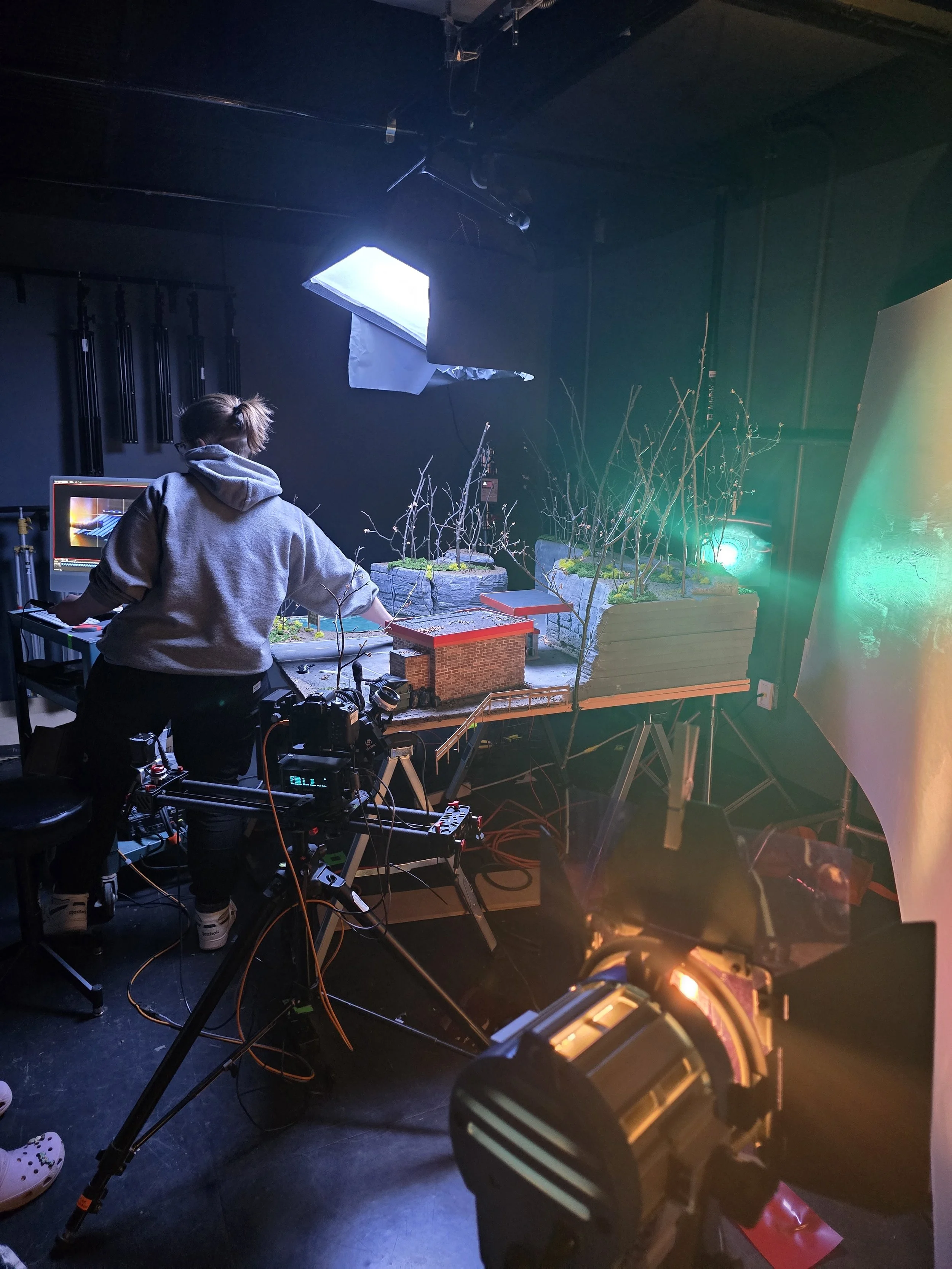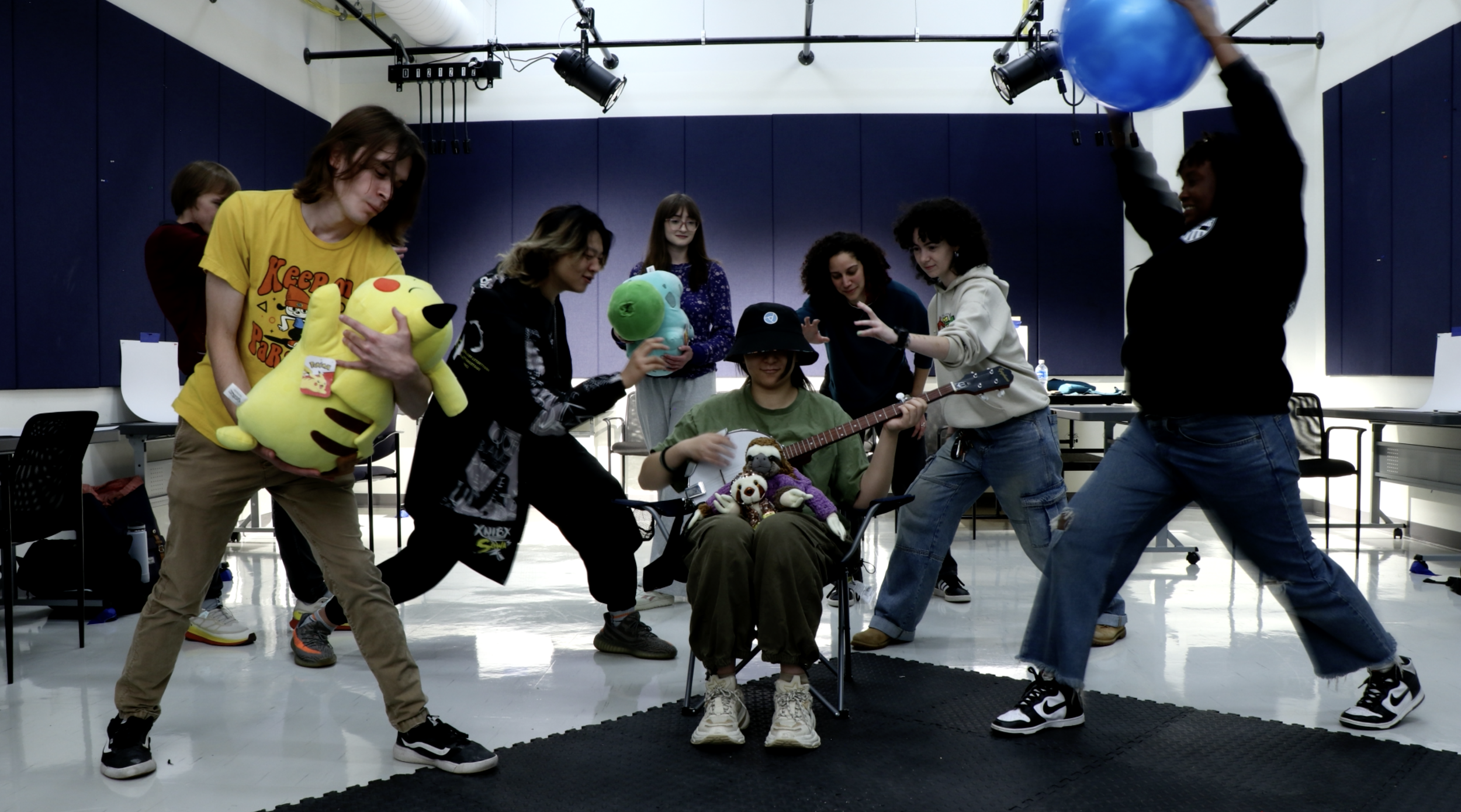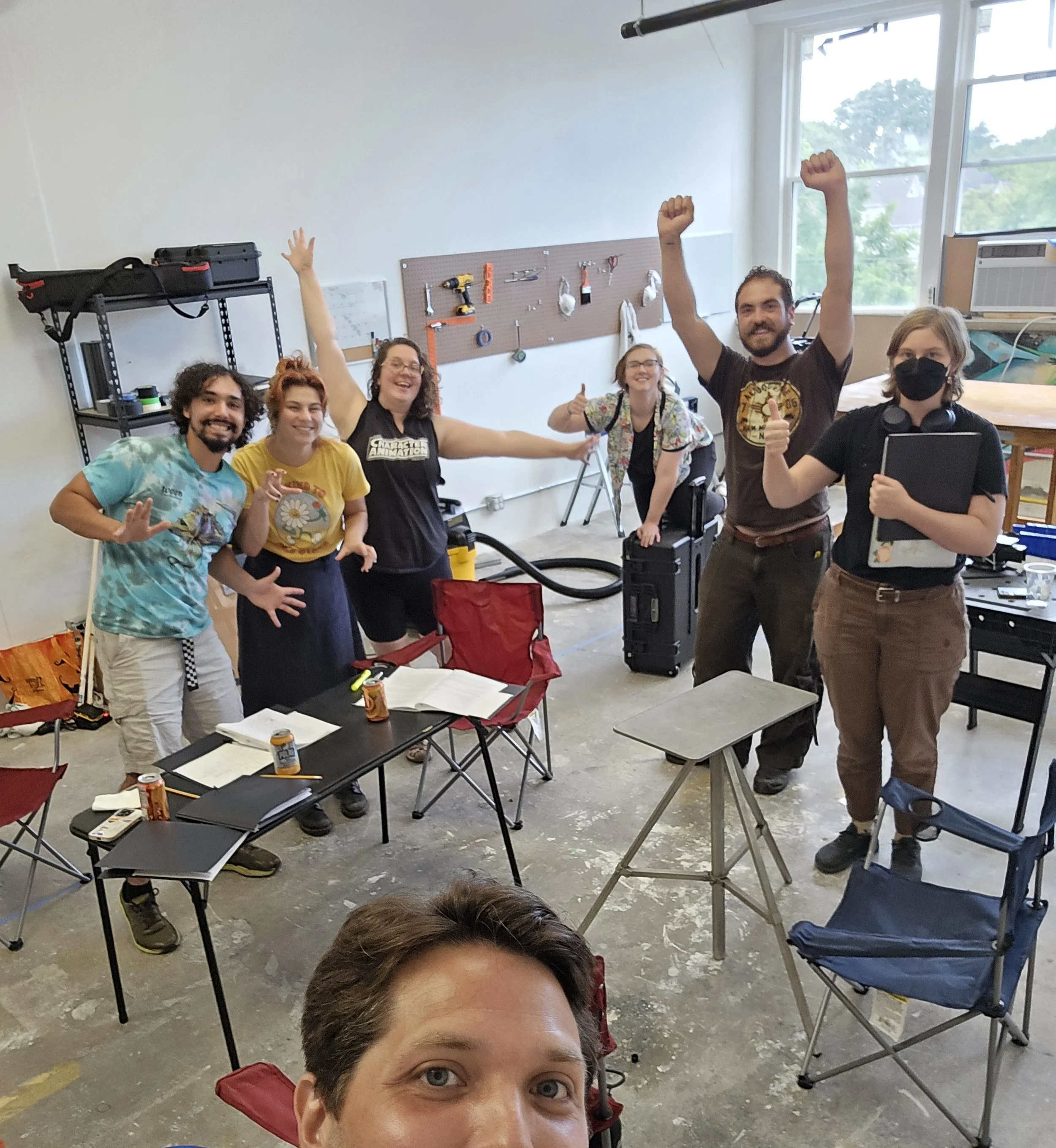Teaching Philosophy
I. Learning as a Social Experience
My teaching is rooted in a social constructivist model of learning, where students actively co-construct knowledge through hands-on, collaborative, and reflective engagement. Through individualized mentoring and scaffolding techniques, I give students the tools and active experiences needed to integrate their own abilities and worldviews into challenging frameworks that encourage them to engage in their own growth as disciplined artists. My courses cultivate not only technical skills, but also empathy, confidence, and a capacity for self-expression. I provide structure, safety, and community as we navigate artistic risk. I view myself not as a “sage on the stage,” but as a guide and collaborator in their creative process. I teach students to interrogate both their successes, and where their work highlights a skills-gap, helping them develop the language to articulate why a certain approach worked, or why it didn’t. When given the tools and a healthy method of rigorous reflexive learning in a safe, collaborative, hands-on environment, every success and failure can help them grow.
II. Pedagogical Practice
Students model the enthusiasm and energy of the instructor, so I provide an initial high level of support that builds student confidence and excitement. As they grow into active learners and thoughtful collaborators, I shift the classroom into a more student-led, exploratory space. I foster an environment where students feel safe enough to take risks, make mistakes, and push beyond their comfort zones, knowing that their growth is supported.
It is important for both the instructor and student to be aware of the social constructivist concept of the “zone of proximal development,” where “Vygotsky scaffolding” can take place. This involves identifying skills that a student cannot do on their own, but can achieve by working with a teacher or more advanced student, and doing so until that zone widens. Rather than simply correcting a student, I engage them in problem-solving, talk them through a challenge, and demonstrate the task or invite an advanced peer to do so. Once they see it in action, I have them try again. I carefully pair students up with complimentary areas of expertise and skills. I have them demonstrate, teach, and help each other until they can display competency on their own, then reevaluate their needs and pairings. This cycle of support and release helps students stretch into new competencies just beyond their current level. Over time, I reduce the scaffolding as they grow more confident and independent.
III. Innovation and Impact
My animation courses are hands-on experiences that include industry standard latest technologies and professional practices in line with CAD’s unique position at “the intersection of technology, art, and design.” In addition to developing my students as independent artists, I have them building 3D printers, wiring and programming animatable lights, and using updated methods of fabrication and processes reflective of modern studio practices. For their professional development, students must be prepared for their first day on set.
For their artistic development, I encourage my students think beyond commercial work and move past imitation and trends. I create opportunities for this growth by assigning open-ended projects that require personal research and reflection, experimentation with unfamiliar tools or techniques, and peer critique sessions where students must articulate and defend their creative choices. I model this process by sharing examples of my own projects that took creative risks, including both successes and failures, and discussing how each outcome informed my work. This combination of structured experimentation, reflective critique, and exposure to professional creative risk-taking helps students interrogate their own values and abilities. No matter what line of work they end up pursuing, I want them to leave knowing that their stories matter, their art will continue to evolve, and their creations have intrinsic value.
Students frequently comment on the impact of my immersive methods and have described my classes as transformative. I have overwhelmingly positive student evaluations, and I was honored to be considered for the Richard and Virginia Eisenhart Early Career Award for Excellence in Teaching in 2024. I have again been nominated for academic year 2025. Additionally, significant part of my teaching happens outside formal classroom settings. I mentor dozens of students across thesis, capstone, and independent projects. Many students have described me as their go-to mentor for problem-solving and creative confidence. This unofficial labor reflects my commitment to building a supportive culture where students feel seen and supported.
IV. Performance as a Core Competency
A foundational skill in animation is performance. As Pete Docter, Chief Creative Officer at Pixar, emphasized during an RIT Q&A on what to put in reels: “Acting is key. If you are a good actor, that is what will set you apart.” My decade of experience as a professional actor and teacher of theater and dance enables me to train animators to think like actors: to make intentional, motivated choices, and to communicate clearly.
In a curriculum dedicated to building a vocabulary of movement, performance is the essential element. I redesigned our “Animated Acting Principles” course, where students engage in physical exercises, scene studies, and movement analysis to deepen their understanding of character, timing, weight, and dramatic structure. Students create reference footage and learn to inhabit their characters, resulting in clearer acting beats and more emotionally resonant work. I consistently observe that students who embrace performance fundamentals become stronger visual storytellers with clarity in their artistic voice.
V. Conclusion
Students trust me. My enthusiasm and boundless energy set a tone that students quickly mirror, and I am confident in my methodology and its success. As reflexive learning is a core tenet of my approach, I am also of course always open to learning from my students how best to teach them. Through a social constructivist approach to teaching, my goal is to build an inclusive, rigorous, and emotionally safe space for students to take creative risks. I believe that learning is a social process, and that overcoming a plateau in skill can be successfully addressed by identifying an individual’s zone of proximal development and applying practical scaffolding techniques. I continually reflect on my teaching, refining techniques based on student feedback, peer observations, and evolving pedagogical research. Student feedback is taken seriously, and it is my goal as I grow as a formal instructor to create a space where students feel safe enough to provide the same kind of thoughtful, actionable feedback that I provide them.
“Andrew's ability to identify each student's skill set and meet them where they're at is an outright superpower that allows students to truly shine.”
-student evaluation
“Andrew is really good at meeting students where they're at, pushing them to do more, and celebrating their wins.
Every single student noticeably improved over the course of the semester.”
-student evaluation
“Gave extremely useful critique. Amazing communicator.”
-student evaluation
“Andrew was able to keep my attention and make clear how I could best improve my work in a way that was easy to understand.”
-student evaluation
“He was really friendly and motivational during the whole process, which really helped minimize stress.”
-student evaluation
“Andrew shines when it comes to garnering interest.
There has never really been a moment through any lecture where I am mentally wandering off: he keeps the material interesting. He is a treasure to work with.”
-student evaluation
Andrew creates a very comfortable and open environment for learning and practicing acting in a nonjudgmental space.
-student evaluation
“Created a really fun environment and was always super excited about our ideas. Was definitely a great start to the morning!”
-student evaluation
“Andrew was very thoughtful and supportive of our class . . . He was always very flexible and positive”
-student evaluation
“Andrew is very effective and involved as a teacher, and fosters a welcoming and engaged learning environment.
His feedback on assignments was specific and well thought out, and it has helped me improve greatly. He goes in depth with concepts and explains them clearly. He was my favorite teacher of the year.”
-student evaluation
“Andrew is really open to everyone's thoughts and interests and will go above and beyond to help them succeed with their vision.”
-student evaluation
